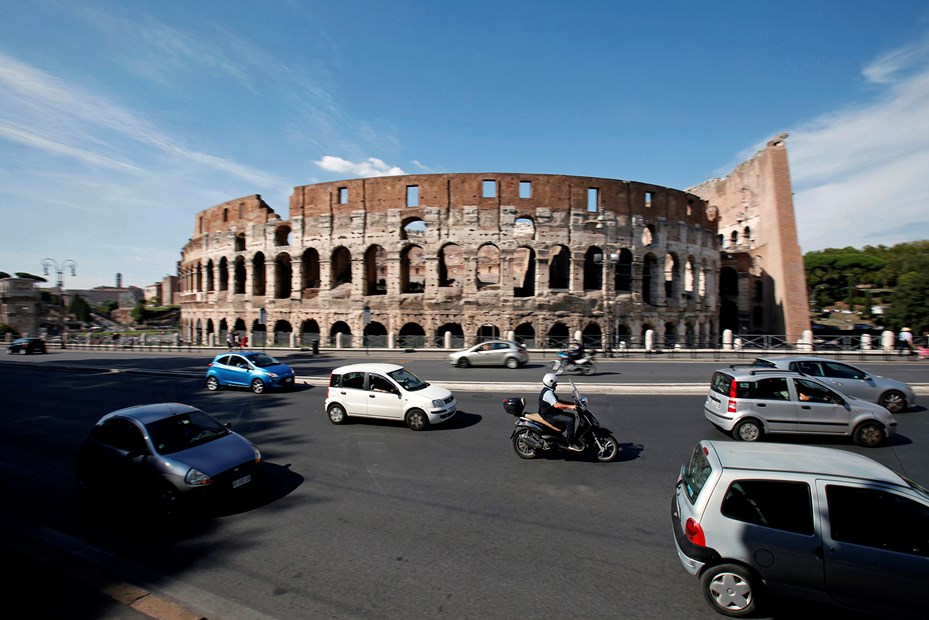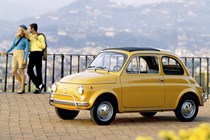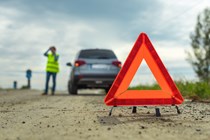Are you planning a driving holiday to Italy? Like most European nations, you drive on the right-hand side of the road in Italy, but you’ll need to adhere to more regulations than that to stay on the correct side of the law.
From speed limits to onboard safety items – if you don’t follow the Italian laws, you’ll put yourself at risk of a fine from the Polizia, so it’s important to have all the facts before setting off.
Want to learn more about driving in this country? We’ve put together some driving advice to elevate your experience on UK roads.
On this page we’ll outline everything you need to know about Italian motoring habits and yes, there’s more to it than simply driving like the Formula One lead on a hot lap and stopping regularly for espressos. Don’t forget to check out our tips for car insurance when driving in Europe.
Speed limits in Italy
Contrary to popular belief, Italy does indeed have speed limits. In built-up areas, you’re limited to either 31mph (50km/h) or 43mph (70km/h) as indicated by signage. On the roads surrounding major towns and cities, you’re restricted to 56mph (90km/h) on secondary roads and 68mph (110km/h) on main roads.
Motorways work a little differently to here in the UK. Most of Italy’s motorways (or Autostradas in the local language) are operated by private companies – and you must pay a toll to use them. The upshot is the businesses that run the roads have more freedom to set their own speed limits.
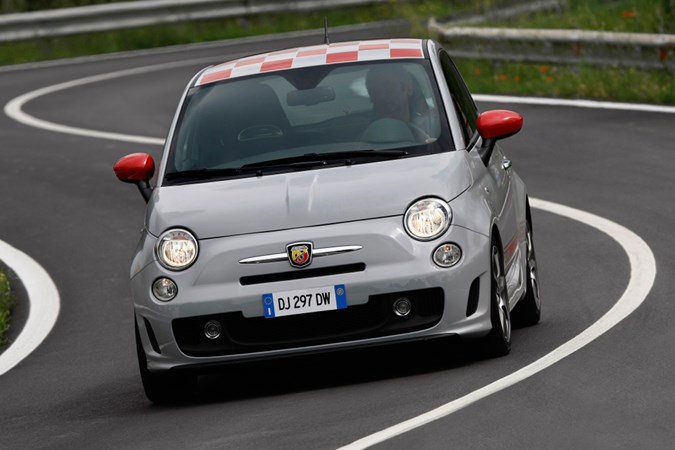
Normally, the speed limit on an Italian motorway is 80mph (130km/h), but the road operators can choose to increase that limit to 93mph (150km/h) if they fancy. However, that higher limit will only be applied to three-lane motorways – and only if the weather is clear and the traffic is flowing well.
Speeding fines in Italy
Speeding fines in Italy start from around €40, but they can quickly spiral into the hundreds depending on the sort of road you’re driving on and the amount you exceed the speed limit by. Italy also has a curious sub-law that increases the amount of money you need pay by 30% if the speeding offence is committed between 10pm and 7am.
Italian police can issue on-the-spot fines, collecting one quarter of the total at the roadside. If this happens, the officer in question must give you a receipt. If you refuse to pay the fine, the police can confiscate your vehicle until you do.
However, getting caught speeding by a fixed camera might not result in a fine. Brexit put an end to Britain’s participation in the EU’s Cross-Border Enforcement directive. This system allowed the Italian police (and other EU law-enforcement agencies) to request the licence details of speeding British drivers, so they could be penalised accordingly.
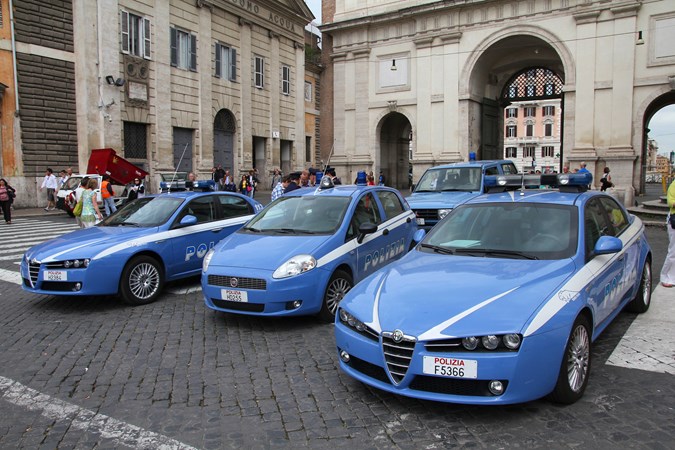
Speed camera detectors are illegal in Italy and getting caught with one in your car could land you with a hefty fine. However, you can use GPS mapping to keep tabs on the locations of fixed speed cameras. Google Maps includes this function should you need it.
Rules of the road
Unlike in the UK, you must be over the age of 18 to drive a car in Italy. Visitors wishing to drive need to hold a full UK driving licence or an equivalent full licence from an EU or EEA country. Unlike in the UK, you can ride a 50cc moped at age 14 and a 125cc motorbike at age 16.
Vehicles on your right (or any approaching vehicle on rails such as a train or tram) have priority. Overtaking is not allowed near level crossings, when approaching the brow of a hill or on bends. Dipped headlights must also be used on motorways, dual carriageways and out of town roads. Bikers must always use dipped headlights.
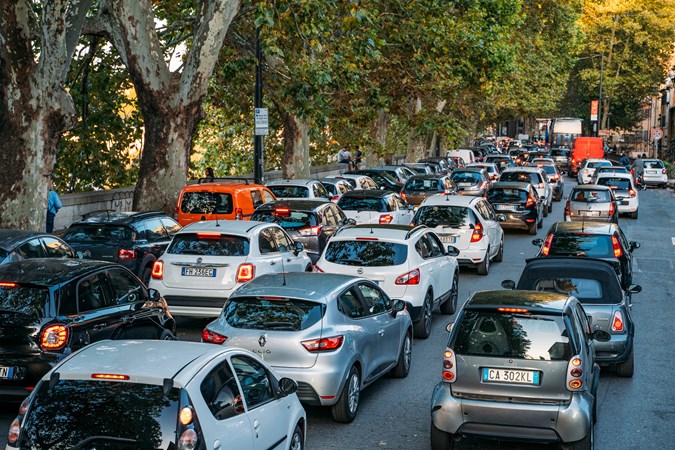
We advise you to never get behind the wheel of a car after consuming any amount of alcohol. But, if you do, you need to be especially careful in Italy because the legal drink-driving limit is 0.05% blood alcohol content. That’s lower than the 0.08% limit in England, Wales and Northern Ireland.
Unwritten rules of the road
Chaos is king in Italy. To a Brit, Italian drivers seem like the most aggressive motorists on the planet. But don’t take it personally. You’re a guest in the nation that produced speed demons such as Mario Andretti and Valentino Rossi – and that lust for speed seems to run rife through the land. Must be something in the water down there…
The best course of action is just to go with it. Embrace the madness and keep with the traffic or face the wrath of an angry Italian blaring his horn at you for getting in his way. Also, stay vigilant – Italian drivers can extract supercar-slaying performance from knackered old Fiat 500s and clapped-out mopeds, and they’re not afraid to hurtle themselves at you in towns and cities.
Low-emission zones
Italy has introduced several restricted traffic areas, called Zona Traffico Limitato (or ZTLs) in the local lingo. It’s a rule normally enforced in the historic regions of cities such as Florence and Rome. Only residents and registered authorised vehicles (such as police cars) are allowed to enter.
Fines for unlawfully entering a ZTL are strictly enforced with cameras, and they can be very expensive. If your hotel is inside a ZTL, you might be able to have your car’s licence plate registered with the local authorities for the duration of your stay. Get in touch with your hotel to check.
Bear in mind that some sat-nav systems won’t register ZTL boundaries, especially if you’re using an older system or something that isn’t powered by Google. Check whether your destination falls within a ZTL before setting off and be wary that you might to park outside the restricted area and walk to your destination to dodge the fine.
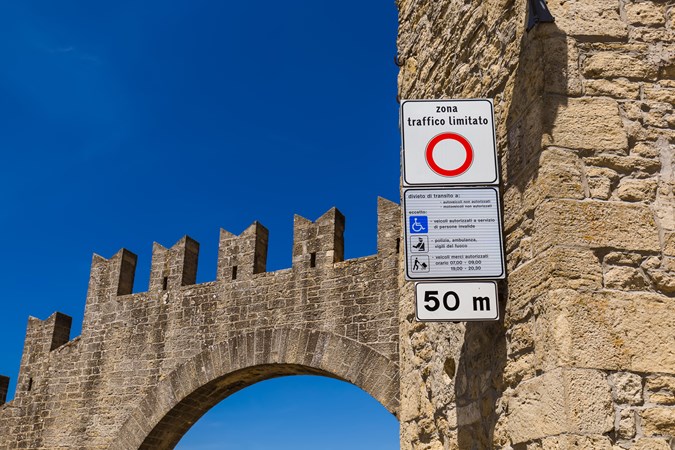
There are a few low emission zones to watch out for, too. For example, petrol cars in the Bolzano-Bozen Province must comply with Euro 2 emissions standards at a minimum, while diesels must meet Euro 3 standards. The restrictions are in force between November and March at rush hour. You also need to keep documentation in your car to prove its emissions ratings.
Things you’ll need in your car
Like a lot of European countries, there’s a list of items you need to carry in your car in Italy, just in case of an emergency. This includes:
- Full, valid driving licence
- Proof of insurance
- Proof of ID (i.e. a passport or national identity card)
- V5 registration logbook (or a VE103 document for rented vehicles)
- High-visibility jackets
- Warning triangle
If you’re driving your car from the UK, you’ll also need to stick beam deflectors over the headlamps to avoid dazzling local motorists. You also need to fit your car with a UK sticker. Now that Brexit is in full effect, the old GB stickers (with the Council of Europe stars) are no longer recognised as national identifiers, as they relate to the period in which Britain was still a part of the European Union.

The identifying mark can feature on your car’s licence plate – but if you don’t have a plate with the badge on, you’ll need to buy a separate UK sticker and fix it to your car’s rear bumper. Particularly wintery regions of Italy may also require snow chains or winter tyres depending on the time of year.
Emergency numbers
Unlike the UK, Italy uses a different phone for each of its emergency services. You can reach the police force at 113, the fire brigade at 115 and the ambulance service at 118. If you can only remember the one number, here’s a handy tip – you can dial 112 anywhere in Europe and an operator will connect you to the nearest emergency services.
If you break down on the motorway, there’s an emergency telephone every 2km. There are two types of phone box on the Autostrada – one that allows you to speak directly to the emergency services and one with a choice of two buttons. The latter setup features a spanner button for mechanical assistance and a red cross button for medical assistance. A red light confirms the message has been received by the operator.
Parking in Italy
The usual common-sense rules apply here. Don’t park your car in the middle of a corner, at a junction, on the brow of a hill, in bus stops or in loading zones – even if the locals seem to just be abandoning their vehicles wherever they can find a space.
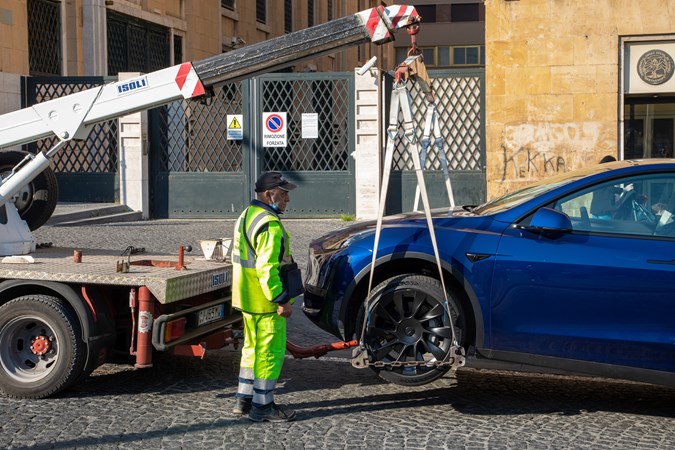
Check for signs near to where you’ve parked. They’ll indicate whether you need to pay for parking. In Rome for example, blue signs denote paid parking areas, white signs are used to signal free parking zones, yellow spaces are reserved for disabled drivers and pink signs indicate areas that have been earmarked for pregnant women or mothers with newborns.
Illegally parked cars are liable to be clamped unless they’re blocking traffic. In the case of the latter, they’ll probably be towed away. You’ll need to pay a fine to either have the clamp removed or to cover the towing and impounding costs.
FAQs
Can I drive with a UK licence in Italy?
Yes, if your are visiting Italy you can drive as long as you have a full, valid UK driving licence, insurance and the correct documents.
Is it easy to drive in Italy?
Despite getting use to driving on the right side of the road, driving in Italy is generally fairly easy. The main roads are in good condition and well signposted, though the same can’t be said for some of the UK’s. As long as you have good driving skills, common sense and have done your research before hand, driving in Italy as tourist isn’t impossible. Have an up-to-date GPS on hand and your good to go.
Is it a good idea to rent a car in Italy?
This is very much dependant on where your travelling to in Italy. It would be advisable to rent a car if your visiting the country side. There is no question about it: dragging a suitcase on and off trains and buses is not enjoyable. But if your only visiting cities, the Italian train system is well connected and one of the cheapest in Europe.
What are the road rules in Italy for tourists?
- You must be over 18 and have a full valid UK licence
- Keep to the right and overtake on the left
- Dipped headlights must be on two-lane motorways
- When passing through villages and towns the horn may only be used for an emergency
Just so you know, we may receive a commission or other compensation from the links on this website - read why you should trust us.


